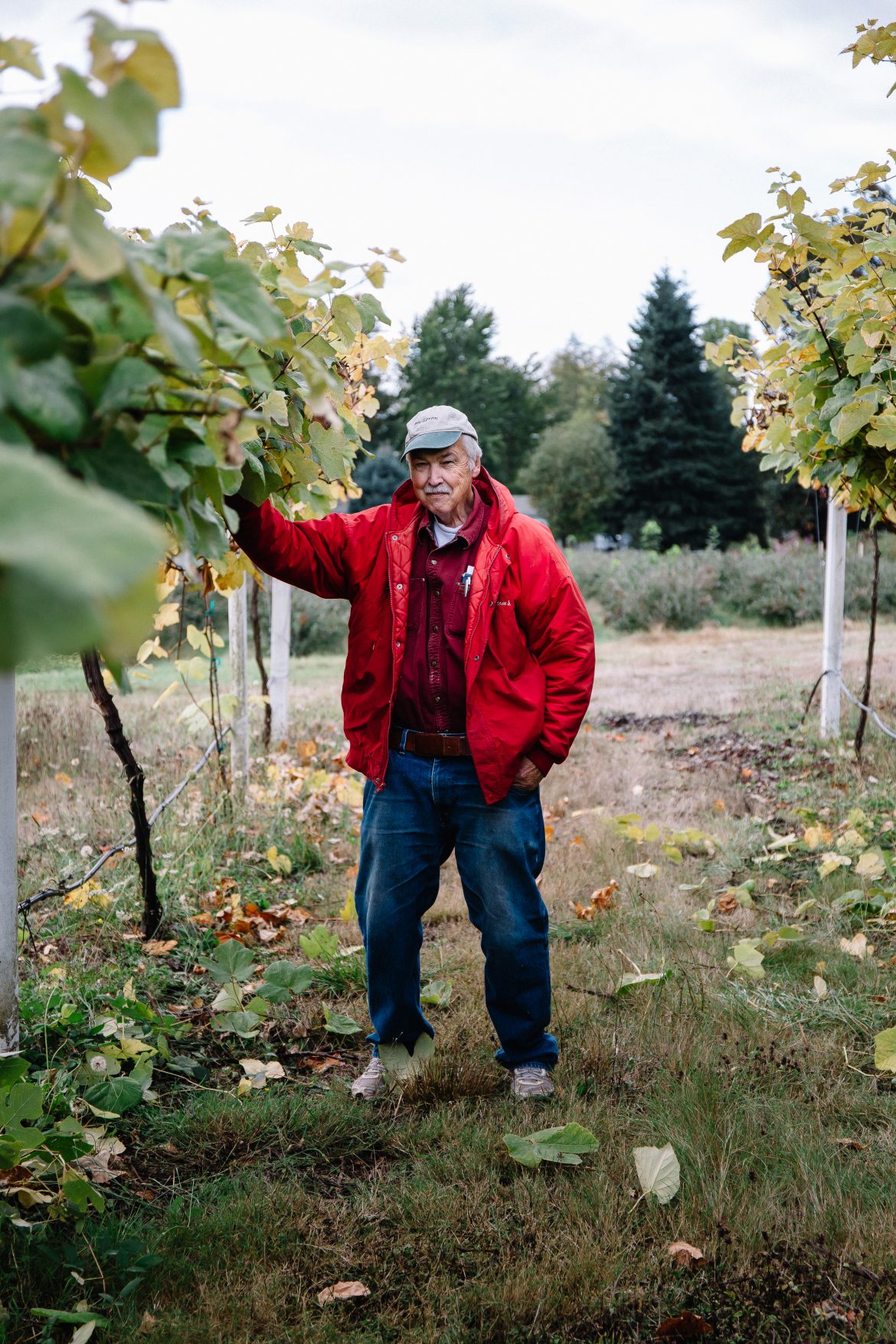Oregon grapes are run up and down the hillsides in the state’s many wine regions
written by Sophia McDonald | photography by Carly Diaz
String the words “Oregon” and “grapes” together and most people immediately visualize the vines that run up and down hillsides in the state’s many wine regions. Those with a good knowledge of native plants may cite the prickly, yellow-flowered state plant instead. Few will call out the table grapes that come into season in August. That’s because for most people, grapes for snacking and cooking come from California and must be bought in plastic pouches in grocery stores. But those willing to wait for the Oregon crop will discover a whole different side to grapes: something as sticky and juicy as the first summer peaches—a fruit capable of sending juice dripping down your chin and becoming as addictive as the best berries. Consider Oregon grapes as the new Pacific Northwest delicacy.
Just as Oregon wine grape growers are now giving their colleagues in California a run for their money, growers in the Oregon grapes industry will contest California’s table grape empire—likely not in terms of quantity, but certainly in terms of quality.
Mike Satterstrom with Coast Fork Vineyard and Berry Farm in Cottage Grove is one of those growers. From his 35-acre property near where the Row River meets the Willamette, he explained that he learned to cultivate the Oregon grape on the competitor’s soil. For much of his life, he grew raisin grapes in California’s San Joaquin Valley. He also had a pumpkin patch that offered hay rides and other festivities in the fall. The agritourism arm of his business meant long hours come October, and a heart attack eventually forced him to slow down. At his wife’s insistence, they sold their farm in California and bought one in Oregon.
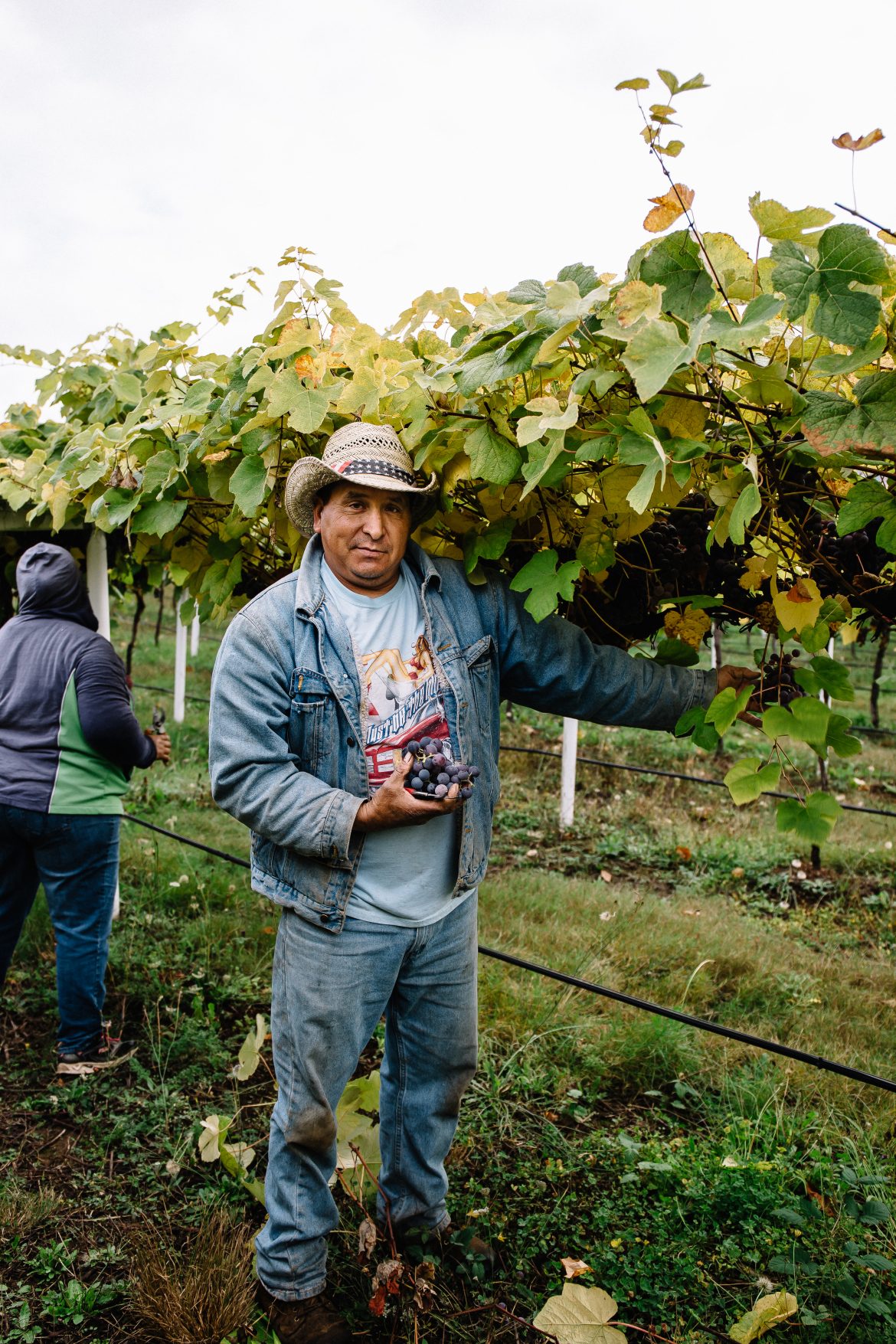
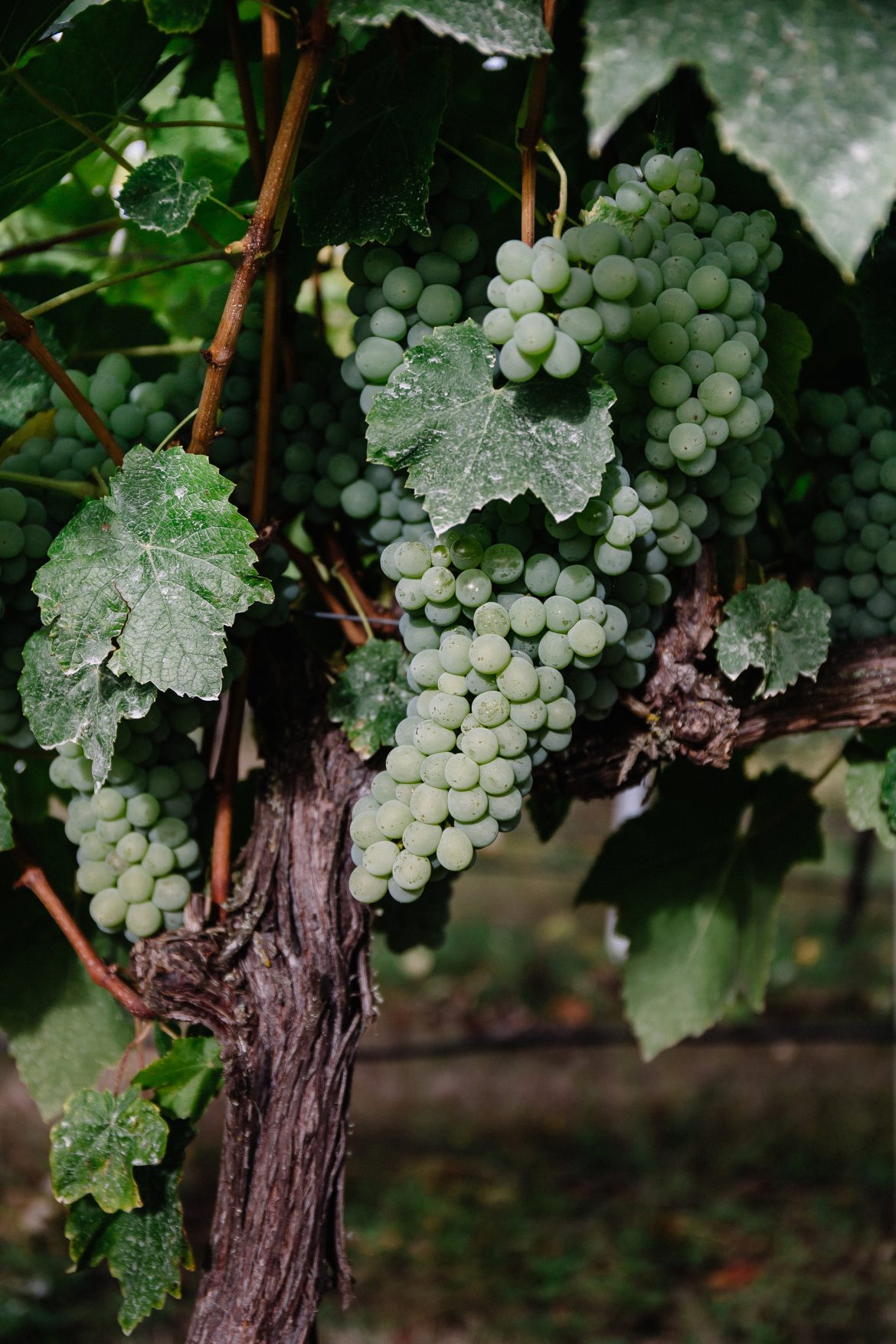
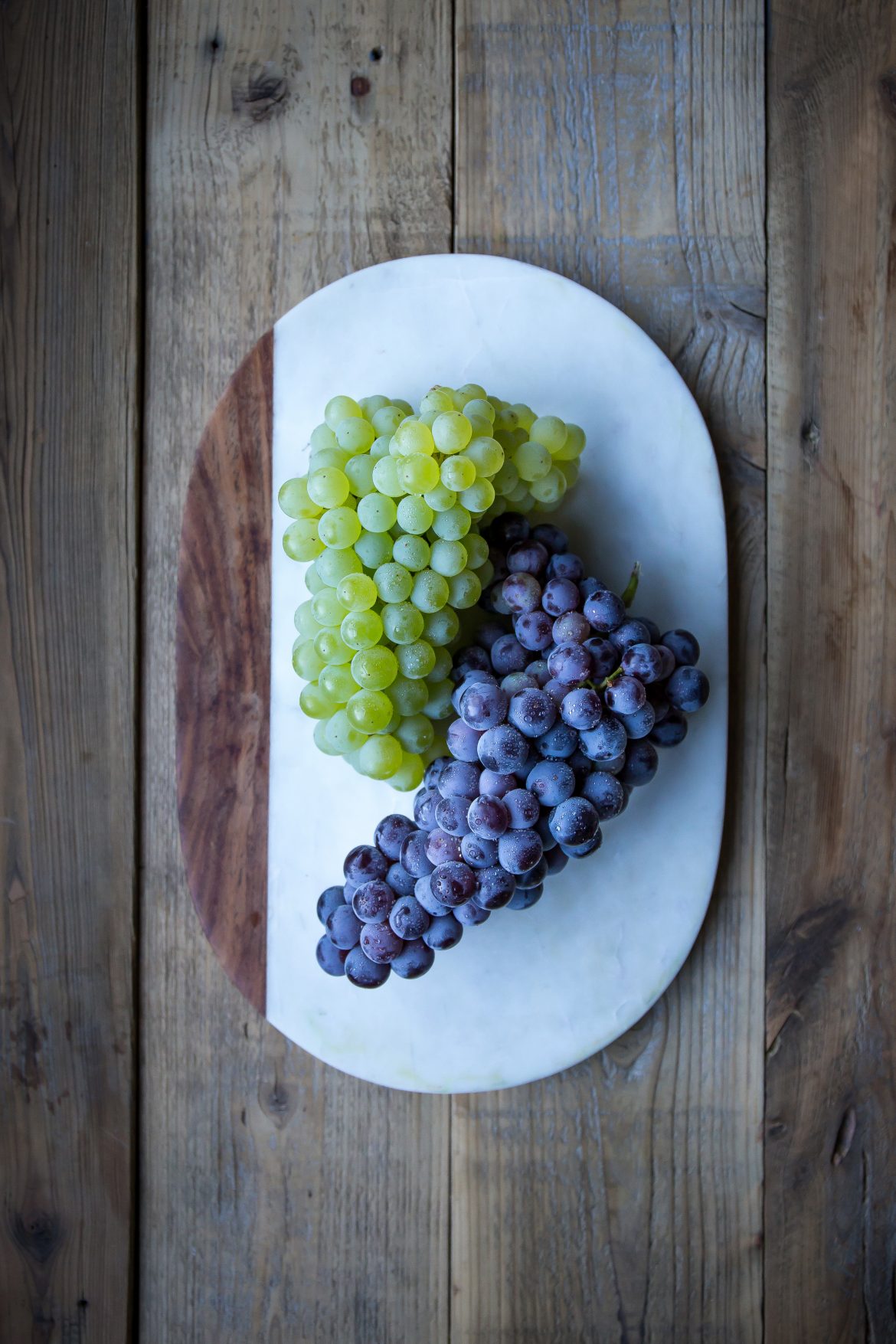
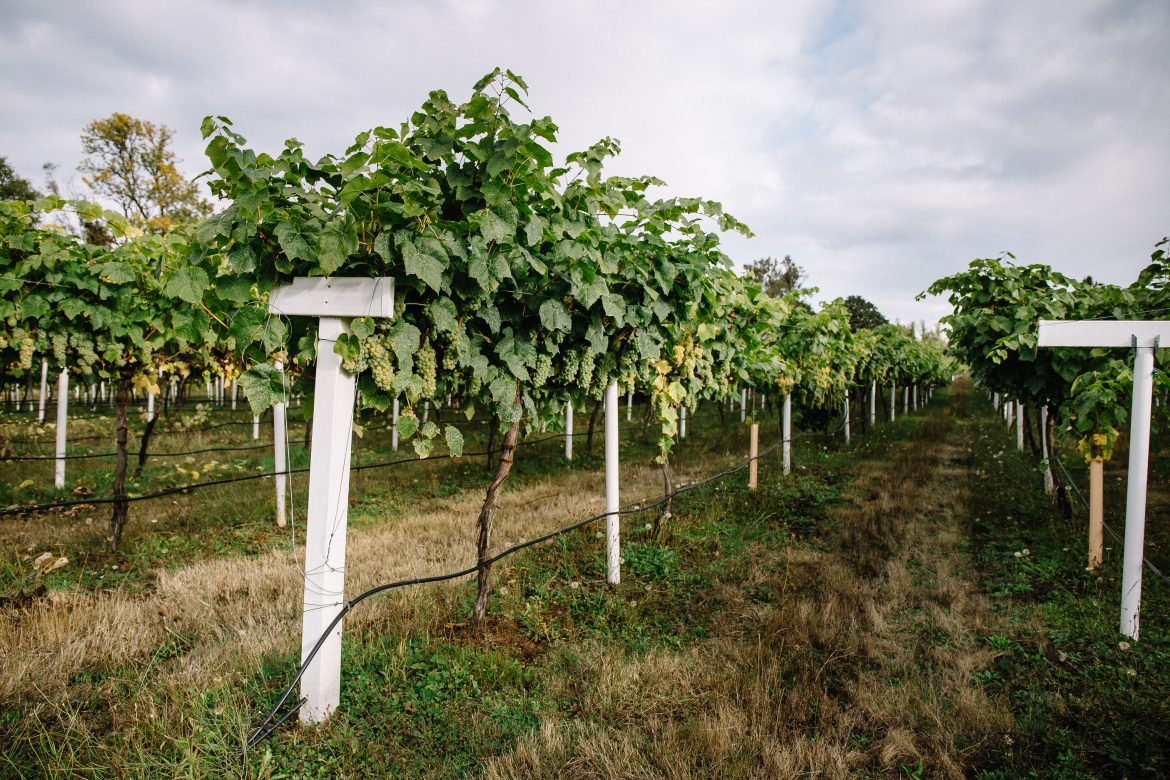
“I was supposed to retire. That didn’t happen,” Satterstrom said. Instead, he planted berries and table grapes. People advised him against the latter, but he ignored them. “When nobody’s doing something, and they tell you you can’t, that’s about the time I’m gonna try.”
Growing grapes requires a year-round commitment. The vines must be pruned during their dormant period in the winter. After bud break in April there’s more pruning and other maintenance, although less so here than in Satterstrom’s old home. “The vines here are so clean compared to California,” he remarked. “There are fewer bugs and less dirt.” He can mow for weed control rather than using sprays.
Harvest can begin as early as August and typically concludes in mid-October. Satterstrom’s season is extended by the fact that he has more than a dozen varieties strung between T-shaped trellises on his farm. Some, like reddish-purple Jupiter, have an oblong shape like the grapes shoppers are used to finding in supermarkets. Others, such as pale green Lakemont and Interlaken and blackish-blue Mars and Venus, are more akin to those found in backyard gardens. His favorite Oregon grape is an unnamed black grape developed at Cornell University that makes a dusky blue jelly. When harvest is done, Satterstrom has no problem selling his bounty to wholesalers. “The Northwest wants table grapes,” he said. “They’re more valuable here than in California because for them, grapes are a commodity. Here, they’re still a rarity.” It’s likely, though, that such a statement won’t be true forever. Since the table grape industry in Oregon is still in its infancy, no one tracks growers or total production. What is known is that most Oregon grapes are grown in the Willamette Valley or Columbia Gorge, and they tend to be a marginally pro table side crop. “If you’re a farmer growing berries, most of your other varieties are done by [late summer],” said Amanda Vance, a research assistant in the horticulture department at Oregon State University who specializes in table grapes. “Grapes are a nice addition to a diversified small farm.”
Although grapes are most commonly a snack food, there are many options for cooking with them. Chef Darrell Henrichs with 10Below in Bend said of his chicken veronique recipe, “It truly is an old classic that has robust flavors from the tarragon and a crisp finish from the grapes. I prefer using red grapes, for they give the sauce a pink color that makes a nice backdrop for the chive garnish.”
Sweet grapes can also be used in desserts such as the Oregon grape crostata from Alisha Falkenstein, pastry chef at Il Solito in Portland. The fruit is piled in the center of a pastry crust that holds in the delectable juices.
For something completely different, try Urdaneta chef Javier Canteras’s ajo blanco with green Oregon grapes. Ajo blanco is a cold gazpacho made with almonds, sherry vinegar and day-old bread. Grapes add sweet flavor to this unusual, delicious summer delicacy.
Did you like this article? Check out more of 1859 Oregon’s Magazine!


